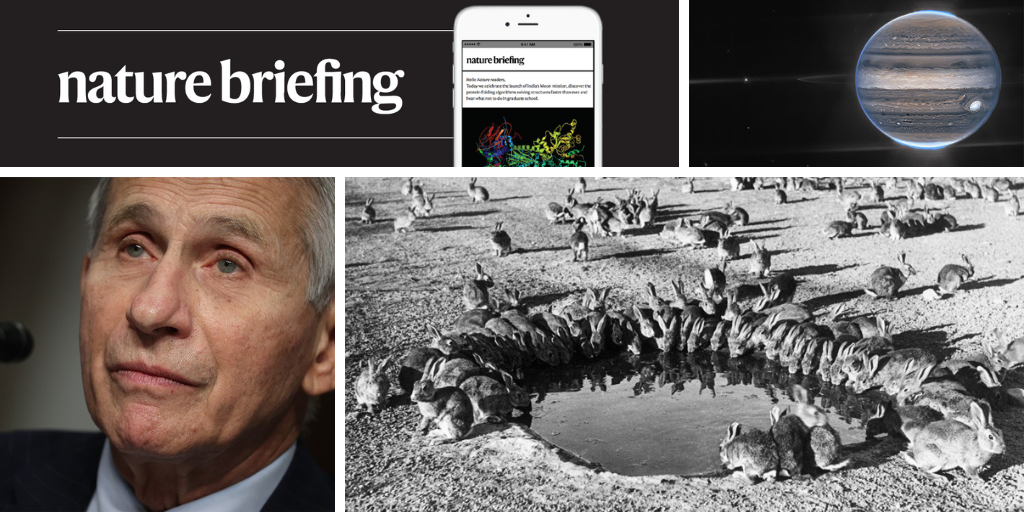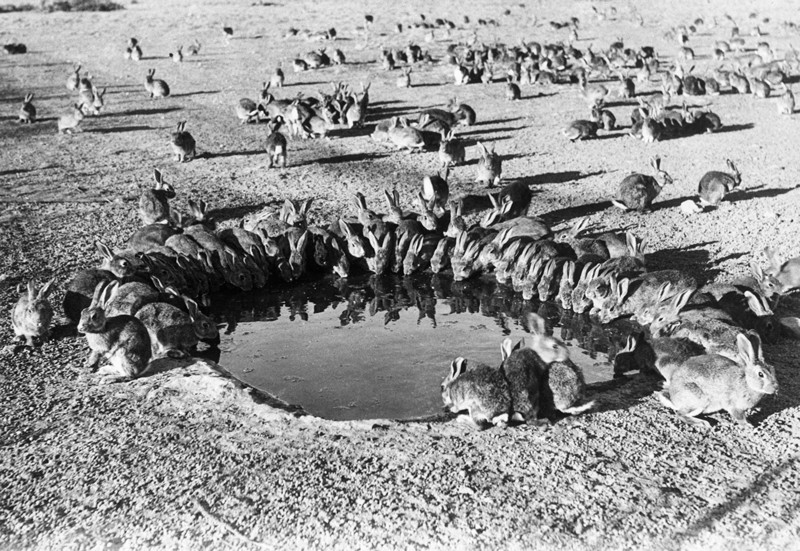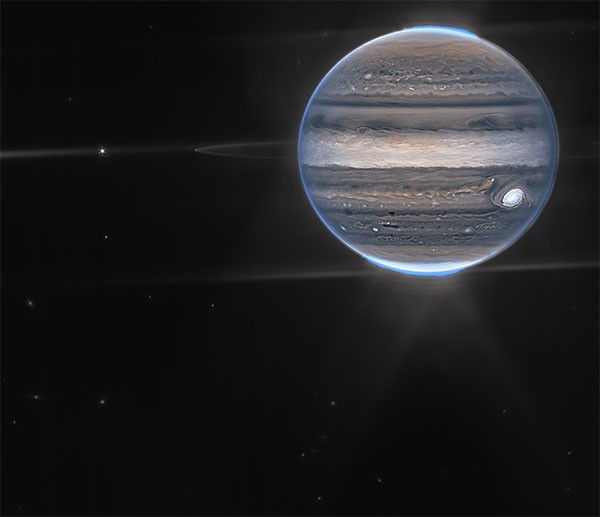Hello Nature readers, would you like to get this Briefing in your inbox free every day? Sign up here
Australia’s invasive rabbit population probably originated from a shipment of two dozen wild English rabbits that arrived near Melbourne on Christmas Day 1859. A genomic analysis found that Oryctolagus cuniculus’s wild ancestry probably gave it an advantage over previous arrivals. “That single event triggered this enormous catastrophe, ecologically and economically, in Australia,” says evolutionary geneticist and study co-author Francis Jiggins.
Anthony Fauci, who has been the top infectious-diseases adviser in the United States for almost 40 years, will leave his leadership roles in December. From the AIDS epidemic to the COVID-19 pandemic, the iconic medical chief has advised seven US presidents on numerous outbreaks. “Dr Fauci is the most dedicated public servant I have ever known,” says former US National Institutes of Health director Francis Collins. “His contributions have saved countless lives from HIV/AIDS, Ebola and SARS-CoV-2, and will stand as profoundly significant gifts to humanity.” But don’t call it retirement, says the 81-year-old Fauci. “I plan to pursue the next phase of my career while I still have so much energy and passion for my field.”
Cognitive neuroscientists have demonstrated that stimulating the brains of adults aged over 65 with weak electrical currents repeatedly over several days led to memory improvements that persisted for up to a month. They used transcranial alternating current stimulation, a non-invasive method involving electrodes placed on the surface of the scalp. Zapping the dorsolateral prefrontal cortex — a region near the front of the brain — with high-frequency electrical currents improved long-term memory. Stimulating the inferior parietal lobe, which is further back in the brain, with low-frequency electrical currents boosted working memory.
Reference: Nature Neuroscience paper
The Arctic treeline is moving at a worrying pace. A study has found that white spruce (Picea glauca) trees are spreading north in the Alaskan tundra at more than four kilometres per decade — faster than any conifer treeline ever measured. “When you see trees growing, you know that the climate has really shifted,” says ecologist and co-author Roman Dial. “It’s not like five years of weather, or ten years of weather. It’s 30 years of climate that’s established new trees in new places.” The spruce trees, in turn, contribute to further warming because they reflect less sunlight than the snow that used to cover the same land.
Features & opinion
Civil engineer Briony Rogers works on projects that address the tension that exists between cities and water: they are commonly located next to important water sources, such as rivers, but many have been developed in ways that dislocate them from their water environments, such as by draining swampland. In Australia, known for its droughts and floods, Rogers is investigating not only how to insulate cities against water shocks, but also how to use water to make them more liveable and healthy.
This article is part of Nature Spotlight: Smart cities, an editorially independent supplement.









More News
Author Correction: Bitter taste receptor activation by cholesterol and an intracellular tastant – Nature
Audio long read: How does ChatGPT ‘think’? Psychology and neuroscience crack open AI large language models
Ozempic keeps wowing: trial data show benefits for kidney disease